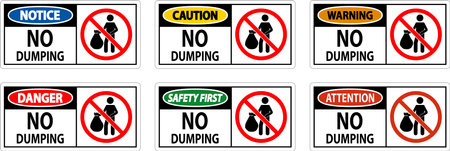Understanding UK Waterways and Site Regulations
Before embarking on any kayaking adventure at UK water-based campsites, it’s vital to familiarise yourself with the unique landscape of British waterways. The United Kingdom boasts a rich diversity of paddling environments, ranging from serene canals and navigable rivers to wild lochs, estuaries, and rugged coastal stretches. Each type of waterway presents its own set of challenges and regulations that every kayaker must respect to ensure safety and legal compliance.
Overview of UK Waterway Types
Kayakers in the UK will encounter a patchwork of canals, rivers, lakes, reservoirs, and tidal waters. Inland waterways such as the Thames or the Norfolk Broads are typically governed by local navigation authorities, while many Scottish lochs and some English lakes offer more open access. Coastal routes around places like Cornwall or Northumberland introduce additional hazards such as tides, currents, and variable weather conditions. Always research your chosen area beforehand to understand its specific risks and rules.
Essential Local By-Laws
Each region may enforce its own by-laws regarding waterway usage. These can dictate speed limits, designated launch points, restricted areas for wildlife conservation, and protocols for sharing space with other users—such as anglers or pleasure boaters. Ignorance is no defence; check with local councils or campsite wardens for up-to-date information before launching your kayak.
Licensing Requirements
In England and Wales, most non-tidal rivers and canals require you to hold a valid licence for your kayak. Membership with organisations like British Canoeing often covers these fees, but always verify whether additional permits are necessary for your intended route. In Scotland, the ‘right to roam’ provides greater freedom on most waterways, but you should still act responsibly and follow any posted guidance.
Campsite-Specific Rules
No two campsites are identical—rules regarding kayak storage, access hours, permitted launch areas, and environmental considerations (such as invasive species protocols) can vary widely. Some sites may have dedicated slipways or ask you to avoid disturbing nesting birds along certain banks. Speak directly with site staff upon arrival and adhere strictly to their instructions; this not only preserves good relations but also enhances the safety of all campers and paddlers.
Essential Safety Gear and Equipment Standards
When kayaking at water-based campsites throughout the UK, the right safety gear can mean the difference between an enjoyable trip and a dangerous situation. British weather and waterways pose unique challenges, so understanding what kit to bring—and how to choose it—should be every paddler’s top priority.
Personal Flotation Devices (PFDs): Non-Negotiable Essentials
A well-fitted PFD is mandatory for all kayakers in the UK, regardless of experience or location. Look for models certified to BS EN ISO 12402 standards, ensuring buoyancy and reliability even in rough British waters. Adjustable straps are vital for comfort over layers, especially given the UK’s unpredictable climate. Always inspect your PFD for wear before each outing.
Communication Tools: Staying Connected in Isolated Waters
The British Isles are home to remote lochs, tidal estuaries, and winding rivers where mobile coverage can be patchy. Carry a waterproof VHF radio—preferably one rated IPX7 or higher—for direct contact with the Coastguard or other vessels. Supplement this with a whistle attached to your PFD for immediate signalling. When venturing far from shore, consider a Personal Locator Beacon (PLB), registered with the Maritime & Coastguard Agency (MCA).
Recommended Kayaking Kit for the British Climate
| Equipment | Why Its Needed | UK-Specific Recommendation |
|---|---|---|
| Paddle Leash | Prevents losing your paddle in high winds or currents | Choose robust, saltwater-resistant materials |
| Drysuit/Wetsuit | Protects against cold shock and hypothermia | Drysuit preferred for year-round British use; always check seals |
| Spray Deck (Skirt) | Keeps water out of cockpit during rain or surf | Neoprene recommended for colder months |
| Bailer/Bilge Pump | Removes water from kayak quickly after capsizing or heavy rain | Manual pumps are reliable; avoid battery-powered models prone to UK dampness |
| Navigation Tools | Aids safe route-finding on unfamiliar or foggy waters | Laminated OS maps and compass; GPS as backup only |
| Torch/Headlamp | Ensures visibility during dusk or emergency landings | Waterproof torches with extra batteries stowed in dry bag |
| First Aid Kit | Treats minor injuries until help arrives | Add thermal blanket and anti-chafing ointment suitable for wet conditions |
Your safety kit should be tailored not just to kayaking, but specifically to the challenges posed by British weather—think sudden squalls, chilly mornings, and long stretches of isolated coast. Check all equipment before departure, keep spares where possible, and make sure every group member knows how to use each item efficiently.

3. Risk Assessment and Emergency Procedures
Step-by-Step Hazard Assessment for UK Campsites
Before launching your kayak, a thorough risk assessment is absolutely essential. Begin by surveying the immediate area—look out for submerged rocks, fast currents, and any visible signs of pollution or debris. Pay close attention to local wildlife and vegetation, as some areas may be protected or hazardous. Always consult local notices and speak with campsite wardens about recent incidents or environmental changes. Take note of water levels, particularly after heavy rainfall, as UK rivers can rise rapidly, altering both current speed and safe landing spots.
Protocols for Unpredictable Weather
The British weather is notoriously fickle. Always check the latest Met Office updates before heading out. If you spot darkening skies or feel sudden temperature drops, it’s time to reassess your plans. Carry waterproof gear and dry bags for all essentials; a spare set of clothes in a sealed bag is non-negotiable. If fog rolls in or winds pick up, seek shelter immediately—never attempt to cross large open water in deteriorating conditions. Make a habit of informing someone at the campsite of your intended route and estimated return time.
Structured Emergency Response Measures
Immediate Action Steps
If an incident occurs, stay calm and assess the situation swiftly. Prioritise getting yourself and others out of immediate danger—head for the nearest accessible bank if capsized. Use a whistle (three sharp blasts) to signal distress, which is universally recognised across UK outdoor communities.
Communication Protocols
Keep a charged mobile in a waterproof pouch on your person—not buried in your kit. Know the local emergency numbers (999 or 112) and be able to provide clear details on your location—using OS grid references if possible. Most campsites near major water bodies will also have emergency points marked on site maps; familiarise yourself with these when you arrive.
Aftercare and Reporting
Once safe, seek medical attention for any injuries—hypothermia is a real threat in UK waters even in summer months. Report the incident to campsite staff so they can assist and log potential hazards for future kayakers. By following these protocols with discipline and local awareness, you’ll not only protect yourself but contribute to safer paddling for everyone on Britain’s waterways.
4. Safe Kayaking Practices on the Water
When kayaking at UK water-based campsites, adhering to established safe practices is crucial not only for your own safety but also for the preservation of local environments and the respect of British paddling etiquette. Below are essential guidelines that every kayaker should follow:
Proper Launching and Landing
Launching and landing are moments when accidents can easily occur or habitats can be disturbed. Use designated launch sites whenever available. If you must use a natural bank, avoid trampling reeds or nesting areas, particularly during spring and early summer.
| Action | UK Etiquette & Best Practice |
|---|---|
| Launching | Queue patiently if others are waiting; help newcomers if needed; keep noise minimal in rural settings. |
| Landing | Exit swiftly; carry boats away from shore to allow access for others; avoid blocking slipways or paths. |
Group Paddling Conduct
Paddling in groups enhances safety but requires coordination. In the UK, it’s customary to maintain clear communication and stick together, especially when passing through locks or narrow sections. Always appoint a lead and a sweep (tail-end) paddler to keep the group organised.
- Spacing: Maintain visible gaps to avoid collisions but stay close enough for mutual assistance.
- Signals: Use agreed hand or whistle signals for stops, hazards, or emergencies.
- Camaraderie: Offer help to less experienced paddlers—this is valued highly in British outdoor culture.
Respecting Native Wildlife
The UK’s waterways are home to sensitive wildlife including swans, otters, kingfishers, and nesting birds. Disturbance can have serious consequences, especially during breeding seasons.
- Avoid loud noises near nesting sites or reed beds.
- If you see warning signs for protected areas, steer clear as per local by-laws.
- Give wide berth to swans and their cygnets—these birds are legally protected and can be aggressive if threatened.
Summary Table: Do’s and Don’ts on the Water
| Do’s | Don’ts |
|---|---|
| Paddle quietly past anglers and wildlife Follow right-of-way rules on busy rivers Assist fellow paddlers where needed Adhere to campsite-specific guidance |
Litter or disturb habitats Block slipways or footpaths Approach wildlife too closely Ignore local signage and instructions |
Local Customs & Etiquette Tips
British paddlers value politeness—always greet other river users with a nod or a friendly “Morning!” Give way to working boats and be patient at locks. Leaving no trace is paramount: pack out all rubbish, even biodegradable items, as per the Countryside Code. Respect private moorings and do not trespass on banks without public access rights. By following these customs, you’ll earn goodwill from both locals and fellow adventurers.
5. Environmental Stewardship and Leave No Trace Principles
Practical Techniques for Minimising Environmental Impact
Kayakers at UK water-based campsites must prioritise environmental stewardship to preserve the nation’s unique waterways and natural habitats. Employing best practices such as sticking to established launching and landing points, avoiding trampling delicate riverbanks, and using biodegradable soaps for equipment cleaning are essential. Always carry reusable containers for food and drink to reduce single-use plastics, which are a significant threat to British rivers and coastal sites.
Respecting Protected Areas
The UK is home to numerous Sites of Special Scientific Interest (SSSIs), nature reserves, and conservation zones. Before setting out, kayakers should consult local maps and authorities to identify any restricted zones or seasonal wildlife nesting areas. Keeping a respectful distance from flora and fauna—especially during breeding seasons—prevents unnecessary disturbance. If paddling in sensitive habitats, move quietly, avoid dragging boats over vegetation, and keep group sizes small to minimise your collective impact.
Waste Disposal Aligned with UK Conservation Guidelines
Proper waste management is non-negotiable for responsible kayakers. All rubbish, including food scraps, packaging, and hygiene products, should be packed out—‘leave no trace’ means nothing is left behind. Human waste requires special attention: use designated campsite facilities wherever possible. In remote locations, follow the ‘cathole’ method: dig a small hole well away from water sources, bury waste responsibly, and pack out used toilet paper in sealed bags. Never dispose of chemicals or greywater directly into rivers or lakes; instead, use appropriate disposal stations provided by many UK campsites.
Upholding the Leave No Trace Ethic
Embodying the Leave No Trace principles goes beyond rubbish removal—it’s about setting an example for others on the water. Share knowledge with fellow campers, report environmental hazards to local wardens, and always leave your pitch cleaner than you found it. By integrating these practical techniques into every trip, kayakers support long-term conservation efforts across the UK’s cherished aquatic environments.
6. Navigating Weather and Tidal Hazards
Kayaking in the UK demands a sharp awareness of the ever-changing weather and complex tidal systems unique to British waters. Mastering these elements is critical for both safety and enjoyment.
Interpreting Local Forecasts
Before setting out, consult reputable sources such as the Met Office or BBC Weather for up-to-date forecasts. Look beyond just temperature and rainfall—pay close attention to wind speed, direction, and sudden shifts, which can transform placid water into hazardous conditions within minutes. Understanding local microclimates, especially in areas like the Lake District or Scottish Highlands, is vital; weather can change rapidly and dramatically in these regions.
Managing Sudden Weather Shifts
Always prepare for the unexpected by packing appropriate kit: waterproof layers, emergency shelters, and communication devices are non-negotiable. Develop a habit of scanning the skies for signs of incoming squalls or fog banks. If you spot darkening clouds or feel a drop in temperature, be ready to seek shelter or head to shore immediately. Practice buddy checks frequently—communication and teamwork are your best assets when the weather turns foul.
Understanding Tidal Influences in British Waters
The UK’s coasts and estuaries are shaped by powerful tides that can either aid or endanger kayakers. Use tide tables specific to your chosen launch site (e.g., Admiralty EasyTide) and learn how local topography affects flow speed and direction. Pay special attention to tidal gates, overfalls, and races common around headlands such as those found in Pembrokeshire or Cornwall. Plan your journey with a generous buffer before slack water and always account for the possibility of being caught on an ebbing tide far from safe landings.
Technical Techniques for Survival
- Carry a handheld VHF radio tuned to channel 16 for maritime distress calls.
- Mark potential escape routes on your map before launching—know where you can land if conditions deteriorate.
- Practise rolling drills and wet exits in controlled environments so you’re prepared if capsized by rough weather or fast-moving tides.
Conclusion: Respect for Nature’s Power
British waters demand respect—a hardened mindset coupled with technical preparation is your shield against the unpredictable. By honing your skills in reading the weather and tides, you’re not just surviving; you’re thriving amidst the UK’s wild aquatic landscapes.


